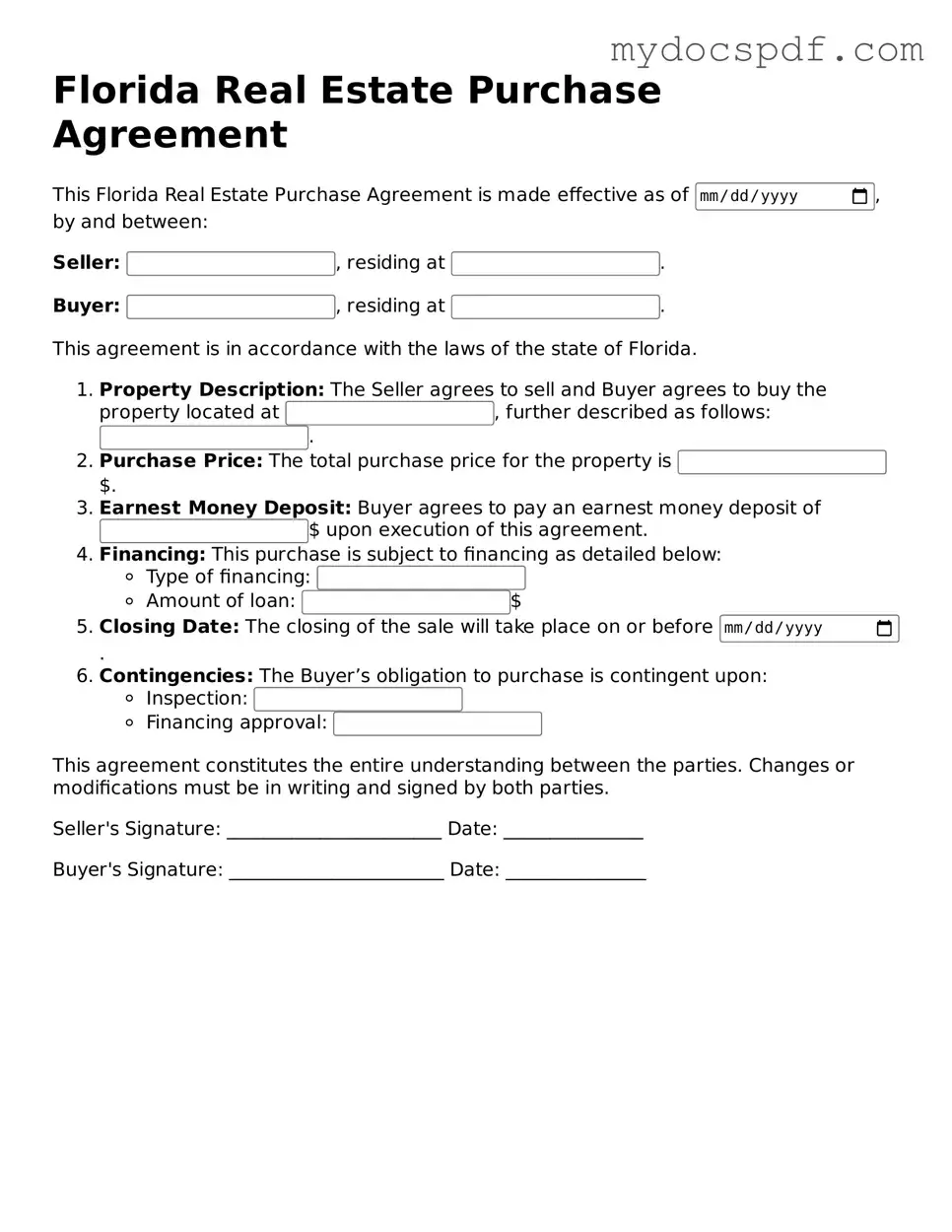Fillable Florida Real Estate Purchase Agreement Document
The Florida Real Estate Purchase Agreement form is a legal document that outlines the terms and conditions of a real estate transaction between a buyer and a seller. This form serves as a critical tool in ensuring that both parties understand their rights and obligations throughout the buying process. By clearly defining the purchase price, contingencies, and timelines, the agreement helps facilitate a smoother transaction.
Access Editor Here
